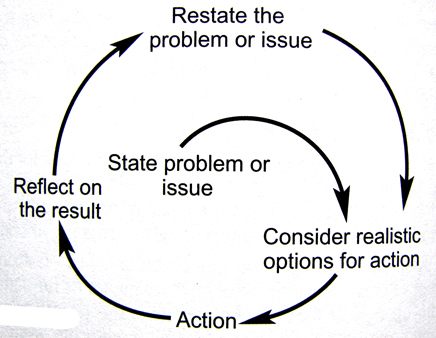Permaculture: History
These notes form a part of sanjeev_shankar's research, which is summarised in his research report see also history of permaculture
’PERMACULTURE’ was originally coined in the mid seventies by two Australians, David Holmgren and Bill Mollison, to describe the design system pioneered as a response to what they, and many others globally, saw as serious challenges to the survival of all of us. Originally derived from the words ‘PERMAnent agriCULTURE’, permaculture has gone beyond it’s roots in looking at strategies to create sustainable food growing methods to become a worldwide movement encompassing all aspects of how we as human beings can live harmoniously in relation to our Earth and it’s finite resources and create a PERManent CULTURE. Permaculture, today has multiple defintions, but one that is particularly useful might be- “To create sustaianble human habitats by following nature's patterns”. This thought is clearly manifested in permaculture as a system of gardening but also as the worldwide network of individuals and groups and further in permaculture as a counterculture.
For many, the Permaculture focus on land and natural resource management is complimentary to the industrial focus of the “green tech” optimists, but there are differences. Permaculture:
- gives priority to using existing wealth to rebuilding natural capital, especially trees and forests, as a proven storage of wealth to sustain humanity into a future with less fossil fuel.
- emphasises bottom-up “redesign” processes, starting with the individual and household as drivers for change at the market, community and cultural level
- more fundamentally, was predicated on the likelihood of some degree of collapse and breakdown in technology, economics and even society, which is not envisaged or designed for by the “green tech” optimists but is a current reality for many people around the world.
- sees pre-industrial sustainable societies as providing models that reflect the more general system design principles observable in nature,and relevant to post-industrial systems.
The assumptions on which permaculture was originally based were:
- The environmental crisis is real and its magnitude and impact directly threatens our survival.
- The ongoing impact of golbal industrial society and human numbers on biodiversity would be far greater than has ever been.
- Humans are subject to the same scientific laws which govern the entire universe including the evolution of life.
- The inevitable depletion of non-renewable fuels will see a return to general pre-industrial systems dependent on renewable energy and resources.
Further, insofar as permaculture is an appropriate response to limitations on use of energy and natural resources, it will move on from its current status as “alternative response to environmental crisis” to the social and economic mainstream of the post-industrial era. Whether it will be called permaculture or not is a secondary matter.
Permaculture Principles
Permaculture is a wholehearted adaptation to the ecological realities of decline and offers us a graceful and ethical descent. The process for providing for people's needs within ecological limits requires a cultural revolution. We appear to have little time to achieve ths revolution and in this context, the idea of simple set of guiding design principles which have wide, universal application is attractive. The following principles are slogans which act as a checklist when considering complex options for design and evolution of ecological support systems.
- Careful observation and thoughtful interaction where the landscape is treated as a textbook.
- Catching and storing energy in the landscape (water, soil, trees, seeds, built environment and culture). Energy storage in culture refers to appropriate governance and economy.
- Obtaining a yield to create a system of self reliance. This involves organising control mechanisms and feedback loops that help the system adapt and stabilize.
- Applying discipline, self-regulation and accepting feedback. Keeping a constant check on our needs and wants.
- Using and valuing renewable resources and services
- Trying to producing no waste. Celebrating the concept of recycling.
- Design from patterns to details. Constant search for improvement and innovation.
- Integrate rather than segregate. Aiming for an inclusive approach.
- Using small and slow solutions. Leaving no trace.
- Using and valuing diversity
- Using edges and value the marginal
- Creatively using and responding to change 1)
Now, in a situation of descent, ethics become indispensable and through their culturally evolved systemic nature lead us to create a more inclusive view of who and what constitutes “us”. The three broad maxims or principles which cover these are given below:
- Care for the earth
- Care for the people
- Set limits to consumption and reproduction, and redistribute surplus
How one inteprets the principles listed above and implements them is open for refinement and improvisation. One has to take responsibility and see problems as opportunities, or problems as the solution. Every element here serves multiple functions and every function is served by multiple elements. Using these principles we can come up with a design that is in line with our regenerative world.

